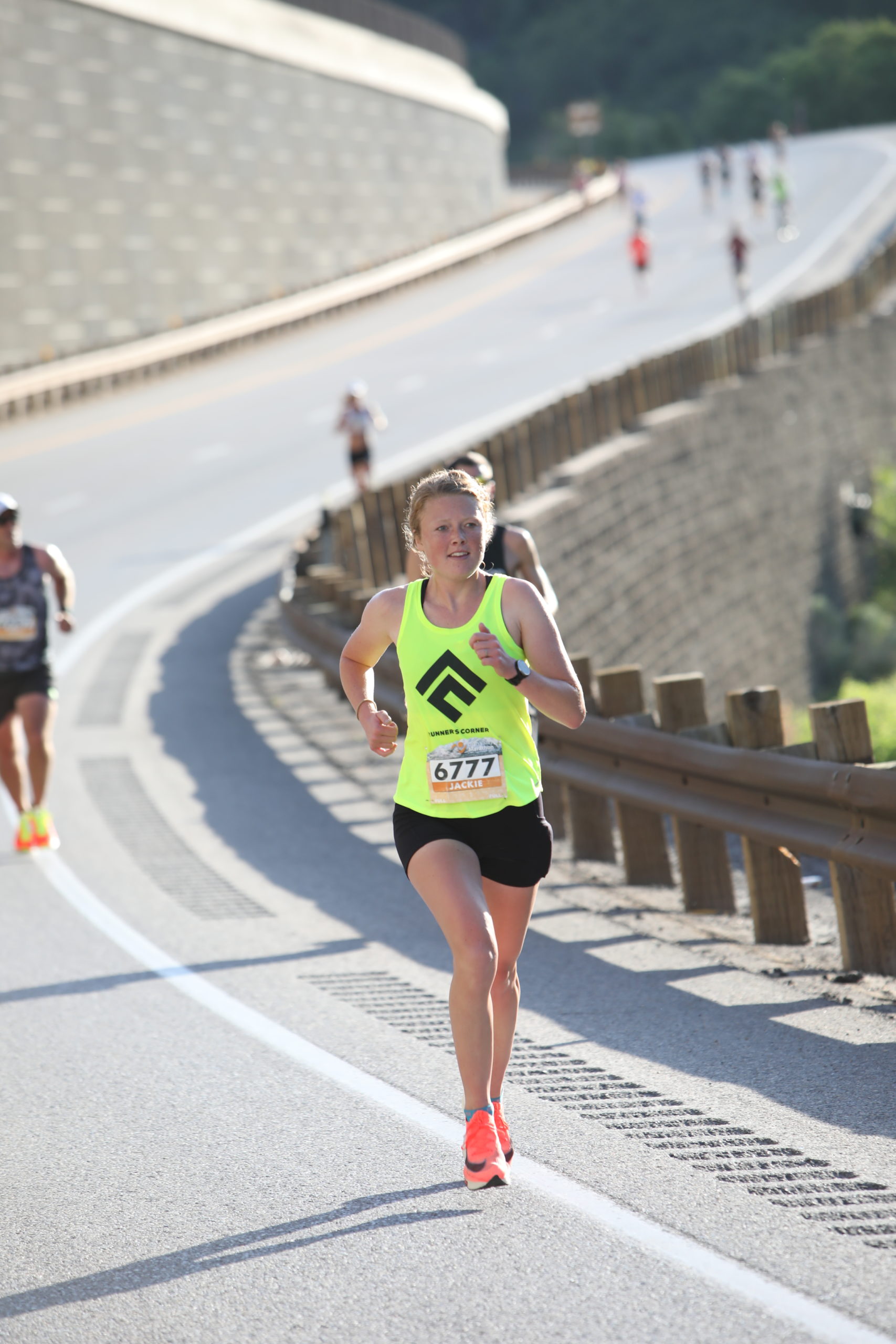Fueling for Double Days

Whether you are a recreational, collegiate, or professional athlete, double workout days are likely something you are familiar with. Splitting an athlete’s daily exercise volume into two quality sessions can be helpful for increasing volume. It can also reduce risk of injury, maximizing available time, and finding balance between work/family/recreation. Nutritionally speaking, double days are a way to help you avoid the energy-zapping effects of excessive glycogen depletion. Glycogen depletion can occur when doing multiple hard/long sessions in a short time frame. Here are some guidelines to consider when fueling for double days:
Four Tips For Fueling For Double Days
#1 Prioritize Fueling Surrounding Your Workout
Eating & drinking properly before, during (if exercising longer than 60-80 minutes), and after a workout session is extremely important for athletes who are looking to optimize their athletic performance. When working out twice in a day, the urgency of fueling properly surrounding your workout becomes more pronounced. If you do not recover enough between sessions, your second workout will likely leave you feeling overly depleted & sluggish. The second workout can lead to injury if you’re not fueling for double days properly.
Carbohydrates are the main nutrient to focus on before your workout. Carbohydrates are our body’s preferred source of energy during exercise. It is the easiest nutrient for our body to convert into energy. Of course, we need plenty of energy during a run, bike, swim, or lift! Eating something is better than nothing, even if it is small. Some of my favorite options are peanut butter energy bites, plain cereal, applesauce, dates and peanut butter, or pretzels.
Workouts lasting longer than 60-80 minutes would benefit from taking in fuel during the run. This is especially true, if the activity you are doing is hard/intense. For this specific duration of activity, 30-60 grams of carbohydrate per hour is recommended. For a 90 minute bike ride, consider taking 2 gels – 1 at 30 minutes and one at 60 minutes to help you feel your best. Maurten, Spring, Huma, SIS, and UCAN are the most popular options among my athletes.
Following your workout, aim for a meal or snack that has a 3:1 ratio of carbohydrates to protein. Carbohydrates are the main nutrient (again) to focus on to replenish those glycogen stores, but a modest amount of protein is needed to help stimulate the muscle growth & rebuilding process after a session. Generally speaking, about 20 grams of protein is adequate for most men & women, but each individual has specific needs based on their body size, performance goals, and age. Men & women over 40 years of age should aim for 30-40 grams of protein following a hard workout. Chocolate milk, crackers with 2 cheese sticks, cottage cheese and peaches, or avocado & fried egg toast are great options for a post-workout meal or snack.
Taking in adequate fuel surrounding both of your exercise sessions is key. In the morning, remind yourself that you have a second session to prepare for. After your second session, remind yourself that you have put yourself through a lot of physical stress. A key reminder about fueling for double days is to help you recover. Recovery is not just between session but for your next day of training as well. Your training adaptations and athletic potential will only improve as you learn to prioritize your fueling surrounding your workouts.
#2 Focusing On Simple Foods & The Spacing Between Meals + Workouts
If you find that GI troubles ail your workouts, particularly your second session of the day, focus on simple foods. Choose foods that are low in fiber, low in lactose, and foods you know sit well in your stomach. While a bowl of whole grain quinoa with heaps of vegetables and grilled chicken is a perfectly delicious & healthy option, it may not be the best choice for lunch if you are headed out on a run in the next 1-2 hours. Instead, opt for an option that is easier on the stomach. Consider, 2 slices of peanut butter toast with strawberry slices on top. Each person will have varying tolerance levels for things like fiber, lactose, and overall food volume. Experiment with different options to know what works best for you.
The space of time between your last meal/snack and your workout will help dictate the portion size. Aim to eat full meals 3-4 hours prior to your session. Smaller meals 2 hours out, and just a snack 0-1 hours before heading out. If it has been longer than 5 hours, I highly recommend having a snack. Another option is taking fuel with you to consume during the first 10 minutes of your workout.
Eventually, your tolerance for certain kinds of foods can grow as your stomach becomes trained to handle certain types & volumes of food close to exercise. Training your body to adjust to a new schedule takes time and patience. It isn’t just swim, bike and run. Training also includes understanding the fueling for double days.
#3 Keep Responding To Both Practical & Biological Hunger Cues
This concept applies to all athletes. If you are using double days as a way to increase the volume of your training, this is very important. Logically, when we add more volume to our training, we should likewise add volume to our plates. Respond to your hunger cues & trust that they are correct, even if you feel hungrier than normal (that is to be expected)!
With that said, it is common for athletes to experience a delayed sense of hunger following a hard workout session. You may find that you need more food on double days, but you may not want more food or feel the need for it. In times like these, we rely on practical hunger cues – the logic in our brain that helps us stay adequately fueled, even when we inherently aren’t in the mood to eat.
Learning to develop trust in your body’s biological hunger cues, while using practical cues, to ensure adequate intake can take time. In the long run, it is well worth the effort.
#4 Plan Ahead
Working out twice in one day can make mealtime tricky. Mealtime in this scenario isn’t for just 1 meal, but 2 meals. If adding in a morning swim, you now have less time to eat breakfast than before. If adding in an evening run, you may not get around to making dinner until 7:30. It will feel late and you may have very low motivation to do so.
A little bit of forethought and planning can make these situations easy to handle. On your easier days, prep larger volumes of food that can be used for leftovers at subsequent meals. Make freezer meals that can be popped into the oven. Another option is to purchase/make grab-n-go options for when you are running out the door. Options to have on hand in a pinch include:
- Muffins
- Overnight oats
- Protein drinks
- Granola bars
- Dried fruit, trail mix or pieces of fruit (bananas or apples)
- Cheese sticks
- Boiled eggs
Wrapping It Up
Fueling for double days may feel daunting. Following these simple steps can help you make the most of your training by adequately meeting your energy needs. Focus on staying adequately fueled before, during, and after each session. Choose foods that are easy to digest and that sit well in your stomach. Experiment with different options to find what works best for you. Always respond to your hunger cues. Use your logic to help you navigate periods of time when you don’t feel hungry. Do this even when you know you need it! Lastly, plan ahead to have plenty of meals & snacks readily available when time is scarce but you know you need to eat.
For more tips & guidance, follow @enduura.nutrition on Instagram, or consider working with me in individual or group coaching settings. I would love to help!
References
- Rosenbloom C. Sports Nutrition: A Practice Manual for Professionals. Carbohydrates & Protein for Athletes.. Published in 2012 by the Academy of Nutrition and Dietetics.
- ALGHANNAM, ABDULLAH F.1; JEDRZEJEWSKI, DAWID1; TWEDDLE, MARK G.1; GRIBBLE, HANNAH1; BILZON, JAMES1; THOMPSON, DYLAN1; TSINTZAS, KOSTAS2; BETTS, JAMES A.1 Impact of Muscle Glycogen Availability on the Capacity for Repeated Exercise in Man, Medicine & Science in Sports & Exercise: January 2016 – Volume 48 – Issue 1 – p 123-131
doi: 10.1249/MSS.0000000000000737
- Jäger R, Kerksick CM, Campbell BI, Cribb PJ, Wells SD, Skwiat TM, Purpura M, Ziegenfuss TN, Ferrando AA, Arent SM, Smith-Ryan AE, Stout JR, Arciero PJ, Ormsbee MJ, Taylor LW, Wilborn CD, Kalman DS, Kreider RB, Willoughby DS, Hoffman JR, Krzykowski JL, Antonio J. International Society of Sports Nutrition Position Stand: protein and exercise. J Int Soc Sports Nutr. 2017 Jun 20;14:20. doi: 10.1186/s12970-017-0177-8. PMID: 28642676; PMCID: PMC5477153.
- Thomas DT, Erdman KA, Burke LM. Position of the Academy of Nutrition and Dietetics, Dietitians of Canada, and the American College of Sports Medicine: Nutrition and Athletic Performance. J Acad Nutr Diet. 2016 Mar;116(3):501-528. doi: 10.1016/j.jand.2015.12.006. Erratum in: J Acad Nutr Diet. 2017 Jan;117(1):146. PMID: 26920240.

Jackie Hendrickson RD, MPH is a registered dietitian with a Masters Degree in public health nutrition from Utah State University. Jackie is the owner of Enduura Nutrition and loves coaching her athletes to their athletic potential through sustainable training & nutrition principles. She is an avid road & trail marathoner with a background in collegiate track, cross country, and competitive swimming. Jackie and her husband, Adam, were teammates in college and continue to pursue their running goals together. They live in beautiful Ogden, Utah with their 2 year old son, Lincoln.









